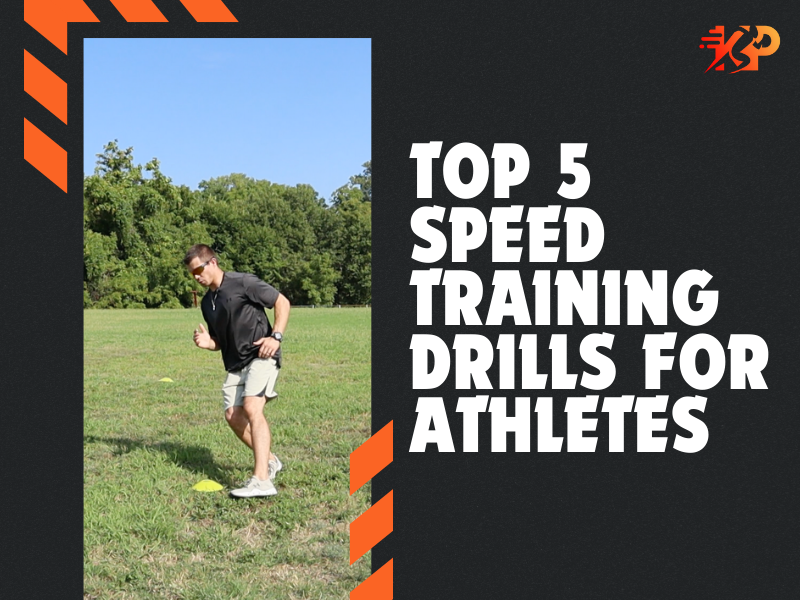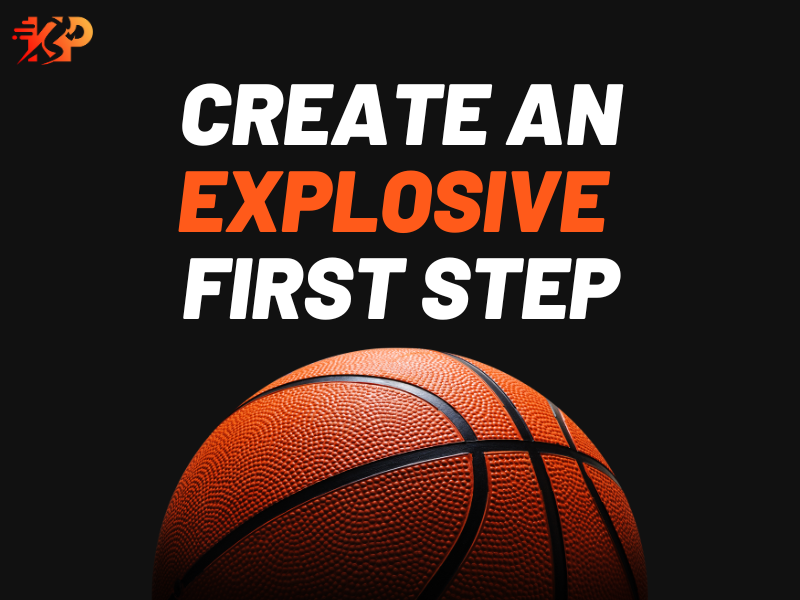Top 5 Speed Training Drills for Athletes

By Mark Keil, CSCS
Posted on April 21, 2025

By Mark Keil, CSCS
Posted on April 21, 2025

Speed is a critical factor in nearly every sport, and athletes of all levels constantly seek ways to improve their running speed and overall athletic performance.
Whether you’re a sprinter, football player, soccer player, or basketball player, enhancing your speed can give you the competitive edge to perform at your best.
In this article, I’ll break down five of the most effective speed training drills to help athletes increase their speed, improve their explosive power, and enhance their overall athleticism.
1. Sprints with Resistance (Sled Pushes or Parachute Sprints)
One of the most effective ways to build speed is by incorporating resistance into sprint training.
When you sprint with added resistance, your muscles are forced to work harder, which leads to greater strength and power output when you remove the resistance.
How to preform Sled Pushes and Parachute Sprints
- Sled Pushes: Attach a sled to a harness or a rope and load it with weight. Sprint with the sled for short distances (typically 10-20 meters). The resistance from the sled forces your legs to generate more force, improving acceleration and power.
- Parachute Sprints: A parachute is another excellent tool for resistance training. As you sprint, the parachute opens behind you, creating drag that forces you to sprint harder to maintain your speed. Sprint for 20-30 yards at full intensity, focusing on your form and acceleration.
Benefits of Sled Pushes and Parachute Sprints:
- Improved Acceleration: Sprints with resistance target the muscles responsible for acceleration, helping you start stronger in competitive situations.
- Increased Explosive Power: Resistance sprints help athletes build the explosive power needed for sports like football, baseball, basketball, soccer, and softball.
- Better Sprint Mechanics: The resistance forces you to maintain proper sprinting posture, which can improve your overall speed.
2. Single-Leg Bounds to Improve Speed
Bounding drills mimic the explosive action of sprinting, but they focus on developing power, speed, and coordination through longer strides. These drills help athletes develop the strength and explosive force required for high-speed running.
How to preform Single-Leg Bounds
Begin by hopping forward on one leg, focusing on getting maximum height and distance with each bound. Use your arms to generate more power and maintain balance. After landing, immediately push off the ground with the same leg to bound forward again. Perform this for about 10-15 bounds per leg.
Benefits of Single-Leg Bounds:
- Improved Stride Length: Bounding helps increase stride length by improving hip flexor and hamstring strength, directly contributing to faster running speeds.
- Better Plyometric Power: Bounding is a plyometric movement that develops the muscle’s stretch-shortening cycle, helping athletes generate more power with each step.
- Coordination and Balance: As you work on maintaining balance during bounding drills, your overall coordination and proprioception (awareness of body position) improve.
3. Hill Sprints to Improve Speed
Hill sprints are a classic and highly effective drill for improving speed, acceleration, and lower body strength. The best part about this drill is there is no equipment required – you just need a hill!
Running uphill adds resistance, forcing you to push harder, which results in better acceleration and faster sprinting on flat ground.
How to preform Hill Sprints:
- Find a steep hill with a moderate incline (around 10-15 degrees).
- Sprint up the hill at full intensity for 5-20 seconds, focusing on powerful strides and driving your knees up. Keep your upper body slightly leaning forward to engage your glutes and hamstrings.
Benefits of Hill Sprints:
- Increased Power and Strength: The incline forces your muscles to work harder, building strength in your quads, glutes, and hamstrings, which are crucial for sprinting and explosive movements.
- Better Cardiovascular Endurance: Hill sprints are also a great way to improve cardiovascular endurance, essential for maintaining speed during long bursts of activity like soccer or football.
- Improved Acceleration: The steep incline forces you to drive your legs more aggressively, helping to develop the strength and power needed for faster starts and better overall acceleration.
4. High-Knee Drills to Improve Speed
High-knee drills are among the most straightforward yet effective drills for improving speed.
This drill targets your hip flexors, quadriceps, and core, essential for explosive running. High knees also reinforce proper running form and help improve stride frequency.
How to preform High-Knee Drills
- Start by standing tall with your feet at a hip-width distance.
- Lift your right knee, aiming to bring it above your waist. Quickly switch to the left leg and bring that knee up as well.
- Perform the drill for 15-30 seconds, focusing on quick, controlled movements. Keep your core engaged and maintain an upright posture.
Benefits of High-Knee Drills
- Faster Stride Frequency: High knees improve your ability to cycle your legs quickly, leading to a quicker stride rate during sprints.
- Stronger Hip Flexors and Core: Lifting your knees high engages the hip flexors and strengthens the core, two key areas that contribute to better running performance.
- Improved Running Form: High-knee drills teach athletes to engage the correct muscles, which helps maintain proper form during sprints, reduce energy wastage, and improve speed.
5. Ladder Drills to Improve Speed
Agility ladders are a staple in many athletes’ training regimens, as they improve foot speed, coordination, and agility.
While these drills primarily focus on quick footwork, they also develop the neuromuscular system, enhancing the athlete’s ability to change direction quickly.
How to preform Ladder Drills:
- Two-In: Start at the base of the ladder and move the right foot into the first box immediately, followed by the left foot. Then, move the right foot into the next box and follow with the left. Repeat this motion down the ladder. Once completed, repeat the movement with the left foot leading.
- Two-In, Two-Out: Start by standing at the base of the ladder. Step both feet into the first box, then both feet out to the side. Continue this pattern across the entire ladder, focusing on fast, controlled footwork.
- Lateral Shuffle: Facing sideways, place your feet inside the ladder, then shuffle laterally through each box. This works on lateral speed and agility.
Benefits of Ladder Drills:
- Improved Foot Speed: Ladder drills enhance the ability to move your feet quickly and precisely, which is essential for fast, responsive movements during a game.
- Agility and Coordination: These drills help athletes improve overall coordination and agility, which is crucial for making fast changes of direction on the field or court.
- Neural Adaptation: Ladder drills train the brain and body to work in unison, improving reaction time and overall athletic performance.
Conclusion on the Top 5 Speed Training Drills for Athletes
Speed is one of the most valuable skills an athlete can possess, and training for it requires consistency, dedication, and the proper drills.
Incorporating resistance sprints, bounding, hill sprints, high-knee drills, and ladder drills into your workout routine will increase your speed and improve your acceleration, power, and coordination.
Remember, speed is not just about how fast you can run but also about how well you can translate your strength into movement. These drills will help you develop that ability and enhance your athletic performance across all sports.
As with any training program, warm up before starting your drills and cool down afterward. With time, commitment, and a focus on improving technique, you will see noticeable improvements in your speed, which can make all the difference in your athletic career.
If you’re in Tulsa, Oklahoma and are looking for the Best Speed and Agility Training Near You, then sign up your athlete to try the program for FREE!



